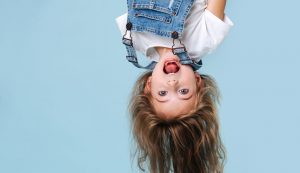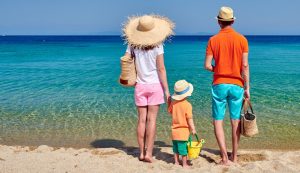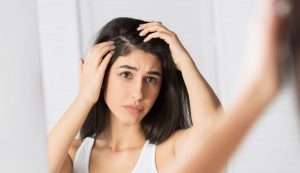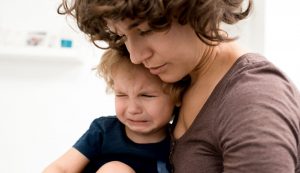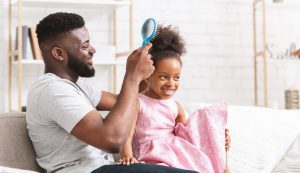Start the new year with a bang instead of an itch! This holiday season feels especially magical because families are finally reuniting after forgoing big celebrations for nearly two years. Food will be shared, laughs will be had and gifts will be exchanged. Unfortunately, lice may also be exchanged. Lice are wingless parasites that crawl from one person to another. They need a warm human head to survive, thrive and lay eggs. Don’t let your head become a home for the holidays. Take a look at what Broward County residents in Coral Springs, Broadview Park, North Lauderdale, Pembroke Pines, Dania Beach, Boulevard Gardens, Coconut Creek, Lauderdale-by-the-Sea, Weston and surrounding communities need to know about lice risks this holiday season.
Will There Be More Lice Infestations During the 2021 Holidays?
It’s shaping up to be a big season for lice. Lice infestations dipped significantly during COVID-19 due to social distancing. As a result, lice have essentially slipped everyone’s mind. That means that people aren’t necessarily paying attention to itchiness on the scalp the way they were two years ago. In fact, it’s very easy to dismiss an itchy scalp as being a side effect of the cold, dry air during the early part of winter. Many parents are also forgetting the lice protocols that they followed in the pre-pandemic age to prevent this common problem. While overall lice infestations dipped during COVID-19, it’s important to know that an overall reduction doesn’t change your odds of getting lice once a breakout is in your household. That’s why everyone needs a plan for lice!
Here’s How Lice Spread During the Holidays
There’s a risk for a lice infestation from the very first hug you get from a family member during the holidays. Accounting for 90% of all cases of lice, head-to-head contact is the primary transmission method for lice. However, you don’t necessarily have to stay snuggled up to a loved one for hours to catch lice. It takes just a few seconds for lice to move from one person to another. Simply standing close enough to touch is all it takes for lice to seize the opportunity to climb on a new host. Here are some common lice-spreading scenarios that happen all the time during holiday gatherings:
- Hugs from grandparents, aunts, uncles and cousins.
- Sleepovers where cousins share bedding.
- Shoulder-to-shoulder cooking and baking sessions in the kitchen.
- Crowding in for a board game.
- Crowding in on the couch for movies or video games.
- Group selfies.
- Group screen time.
Just brushing up against another person while running to the kitchen for a cider refill is enough to get lice on your scalp. Secondary lice transmission is also possible. While rare, a person can catch lice by using a brush, hat or scarf that was used by a lice-carrying person. Lice can live on these objects for about 48 hours. While the holidays are all about sharing, try to avoid sharing any personal items.
Are Lice Dangerous?
Lice are unpleasant parasites that can make you itchy and miserable. However, they don’t pose any major health risks for most people. The biggest complication to watch out for is an infection. However, lice-related infections are actually caused by insistent itching that creates sores on your head.
Common Lice Misconceptions That Keep Infestations Going
Most infestations go on much longer than they need to simply because people don’t have the right lice information! The first misconception that keeps lice going strong is that only kids can get lice. Can adults get lice? Absolutely! However, many ignore an itching scalp because they don’t think it’s possible to catch lice as an adult. The reality is that anyone can catch lice. The second reason why lice infestations continue to go on much longer than necessary is that most people use ineffective treatment methods.
Many people bolt to the drugstore in search of relief after discovering that lice are in their household. Unfortunately, the over-the-counter lice products that you’ll find on the shelf don’t work. They are full of pesticides that lice have actually grown resistant to over the years. Doing these lice treatments at home adds up to lots of work with zero results.
Some people skip the drugstore altogether in favor of homemade lice remedies. The Internet is full of tips for getting rid of lice by applying oils, ointments and cleansers to your head. Their rationale is that these thick products suffocate lice. The only problem is that lice can actually hold their breath for eight hours. In addition, lice can resume normal breathing mechanisms as soon as a substance reaches core body temperature.
What Should I Do If I Catch Lice Over the Holidays?
Don’t panic! You can book an appointment for an effective one-time treatment with your local Broward County Lice Lifters Treatment Center in Coral Springs! Lice is gone in one fast treatment! You can also reduce your chances of catching lice while spending time celebrating with family this year by using the Lice Lifters collection of lice deterrent products. Sold at Amazon, Walmart and your nearest Lice Lifters Treatment Center, these products can help you to worry less about lice. Choose from our Lice Lifters Mint Detangler Spray, Mint Deterrent Shampoo or Mint Deterrent Conditioner. The Lice Lifters team hopes you enjoy a season of holiday wishes instead of holiday itches!


